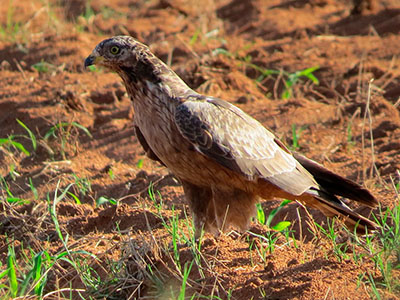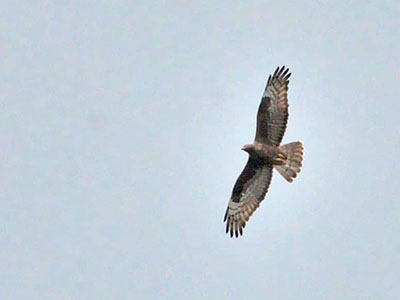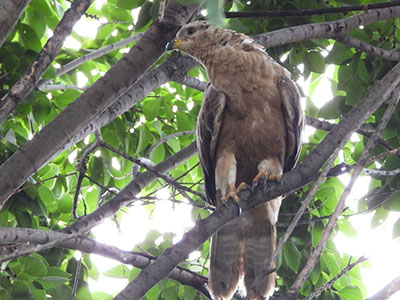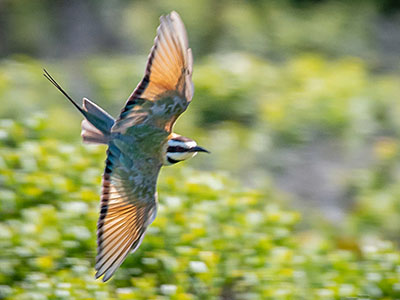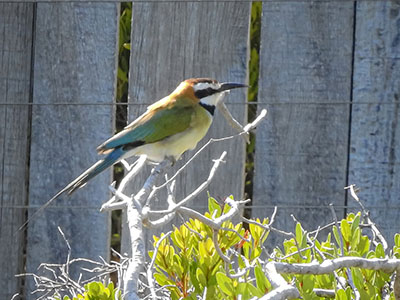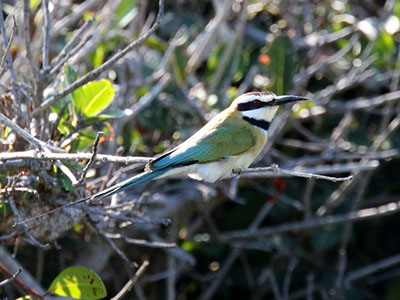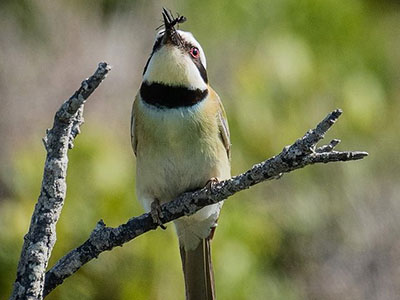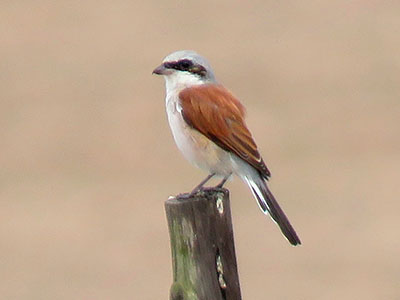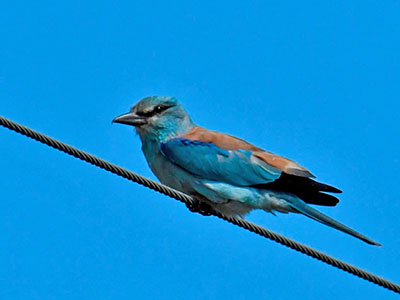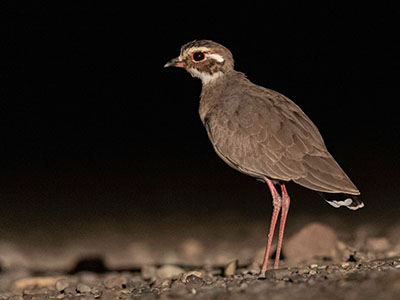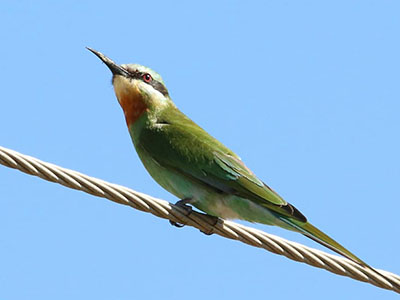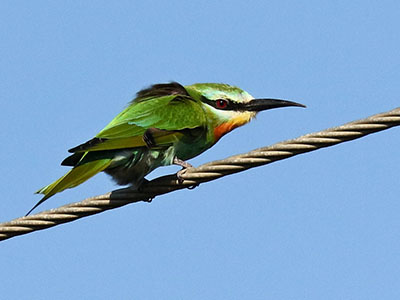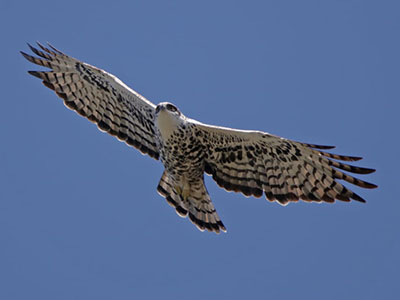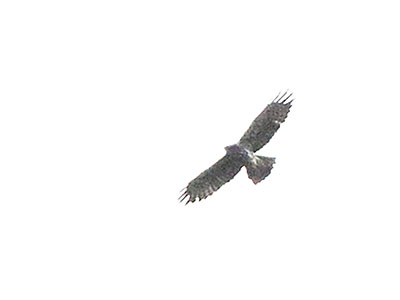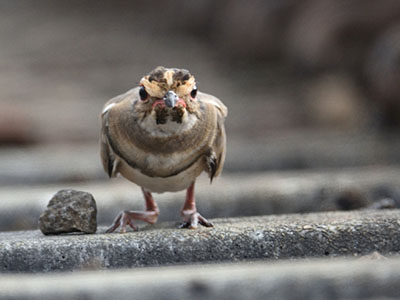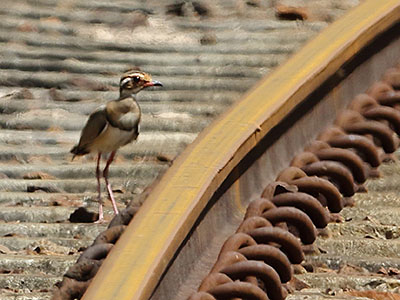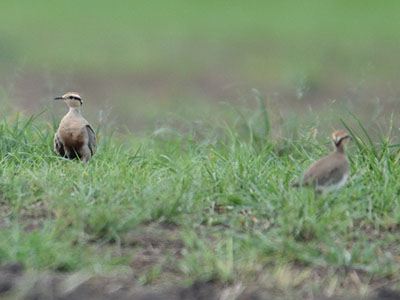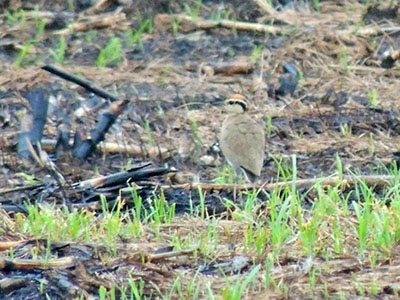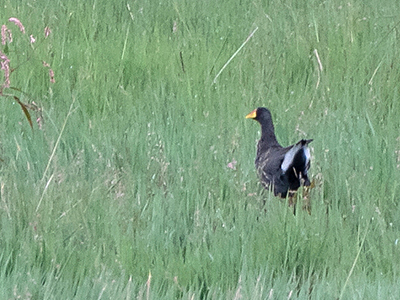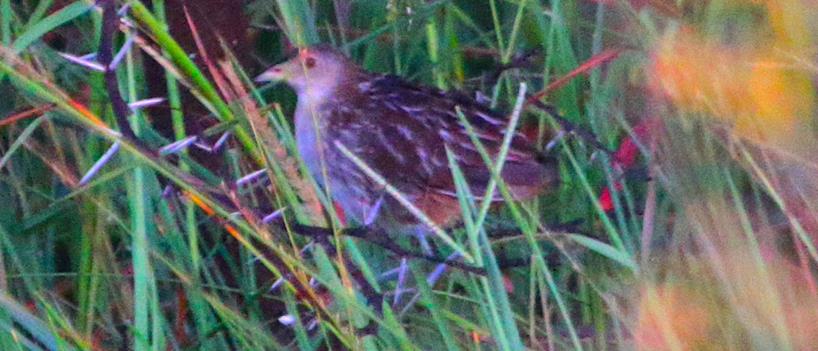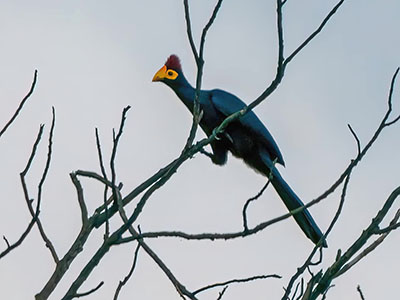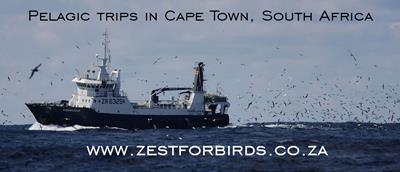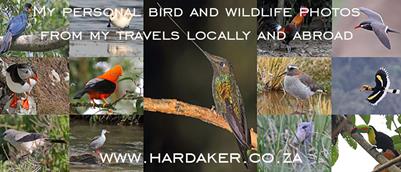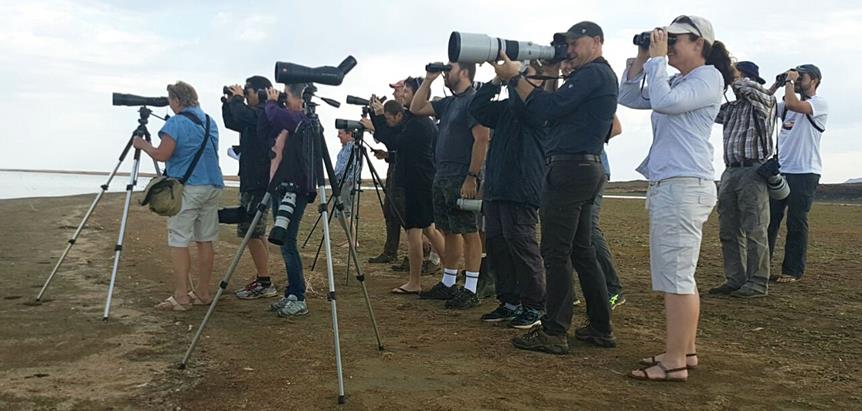SA Rare Bird News Report - 01 March 2021
Trevor Hardaker
| |||||||||
| |||||||||
S O U T H E R N A F R I C A N R A R E B I R D N E W S R E P O R T | |||||||||
|
|
| |||||||
This is the Southern African Rare Bird News Report issued at 18h00 on Monday, 01 March 2021.
Information has been gleaned from various websites, email groups as well as from individual observers who have passed on their sightings. This report cannot be taken as being totally comprehensive as it is based only on information made available at the time of writing. All bird sightings reported here are reported in good faith based on information as provided by the observers. Any inaccuracies are totally unintentional and the writer cannot be held liable for these.
None of the records included in this report have undergone any adjudication process with any of the subregion’s Rarities Committees, so inclusion in this report does not constitute any official confirmation of the particular record. Observers are still encouraged to make the necessary submissions accordingly.
For those who may have only joined the group recently and are interested in finding out what has been seen in the past, previous reports can be viewed at http://groups.google.co.za/group/sa-rarebirdnews |
| SARBN is proud to be associated with the following brands: | |||||||
| |||||||||
| |||||||||
| |||||||||
|
|
| |||||||
| |||||||||
|
| ||||||||
PLEASE CONSIDER FOLLOWING ME ON SOCIAL MEDIA BY CLICKING ON THE LINKED ICONS BELOW: | |||||||||
|
| ||||||||
|
| ||||||||
| |||||||||
|
| ||||||||
Let’s start with a few scarcity reports first…
EUROPEAN HONEY BUZZARD:
· One at Cecelia Forest (Western Cape) yesterday. · One along the Hoogekraal Road near Sedgefield (Western Cape) yesterday. · One at Geelkrans near Patensie (Eastern Cape) yesterday. · One along the Vaal River between Vanderbijlpark and Barrage (Gauteng) on Saturday. · One at Moreleta Kloof Nature Reserve (Gauteng) on Saturday. · One at Mahalapye (Botswana) on Saturday. · One in a garden in Jukskei Park (Gauteng) on Thursday afternoon. | |||||||||
|
| ||||||||
|
| ||||||||
European Honey Buzzard at Cecelia Forest © Mike Buckham | European Honey Buzzard at Mahalapye © Millie Booyse | ||||||||
|
| ||||||||
|
| ||||||||
European Honey Buzzard at Moreleta Kloof Nature Reserve © Keanu Canto | European Honey Buzzard in Jukskei Park © Daniella Richardson | ||||||||
|
| ||||||||
| |||||||||
European Honey Buzzard at Geelkrans © Laurika Ferreira | |||||||||
|
| ||||||||
On to the rest of the news and, starting in the Western Cape, there was some surprize when, after no definitive sightings on Friday, 4 WHITE-THROATED BEE-EATERS were located in Kommetjie again on Saturday morning. True to form, these birds didn’t hang around for long giving only those that were close enough a decent chance of connecting with them and, 45 minutes after the initial report was received, all 4 birds took off and flew off high to the north. Despite a large contingent of twitchers scouring the general area for the rest of Saturday and all of yesterday, there was no further sign of the birds unfortunately. Close by, there was also some surprize when the male YELLOW-CROWNED BISHOP was seen again briefly in Lake Michelle Estate in Noordhoek on Friday while a BLACK-CHESTED SNAKE EAGLE was reported along the N7 about 2km north of the Philadelphia turn-off on Friday as well. There were a good number of EUROPEAN ROLLER records that came through too with one on the van der Stel Pass near Bot River at -34.132, 19.242 yesterday, one along the R319 near Bredasdorp at -34.511, 20.073 on Saturday, one found along the R327 near Herbertsdale at -34.103, 21.841 yesterday and still there today, one seen along the Rheenendal Road near Totties Farm Kitchen (inland of Knysna) yesterday and one still present along the R340 near Plettenberg Bay today as well. Elsewhere, a group of 14 CAPE VULTURES were found this afternoon on the farm Cornelskop in the Bot River Valley at -34.187, 19.228, a single RED-BACKED SHRIKE was found south of Herbertsdale at -34.124, 21.798 yesterday and was still there earlier today and the AFRICAN PIED WAGTAILS were still hanging around near the bridge over the Keurbooms River in Plettenberg Bay throughout the weekend. | |||||||||
|
| ||||||||
|
| ||||||||
White-throated Bee-eater in Kommetjie © Robert Cooper | White-throated Bee-eater in Kommetjie © Pamela Cooper | ||||||||
|
| ||||||||
|
| ||||||||
White-throated Bee-eater in Kommetjie © Jacques Malan | White-throated Bee-eater in Kommetjie © Matthew Prophet | ||||||||
|
| ||||||||
|
| ||||||||
White-throated Bee-eater in Kommetjie © Adam Welz | European Roller on the van der Stel Pass © Lester van Groeningen | ||||||||
|
| ||||||||
|
| ||||||||
Red-backed Shrike near Herbertsdale © Estelle Smalberger | Red-backed Shrike near Herbertsdale © Amanda Walden | ||||||||
|
| ||||||||
|
| ||||||||
European Roller near Herbertsdale © Estelle Smalberger | African Pied Wagtail in Plettenberg Bay © Ludwig Muller | ||||||||
|
| ||||||||
Into the Northern Cape where there was some surprize when a BRONZE-WINGED COURSER was found on New Holme Guest Farm near Hanover on Saturday night, well out of range for this species.
In the Eastern Cape, it was all about lingerers with at least one EURASIAN OYSTERCATCHER still at the Gamtoos River estuary this afternoon, up to 10 BLUE-CHEEKED BEE-EATERS still present in Colchester yesterday and the 2 RED KNOTS still at the Kromme River estuary at St Francis Bay on Saturday. | |||||||||
|
| ||||||||
|
| ||||||||
Bronze-winged Courser at New Holme Guest Farm © Roger Hogg | Eurasian Oystercatcher at the Gamtoos River estuary © Hugh Retief | ||||||||
|
| ||||||||
|
| ||||||||
Red Knots at the Kromme River estuary © Jorrie Jordaan | Blue-cheeked Bee-eater in Colchester © Keith Joubert | ||||||||
|
| ||||||||
|
| ||||||||
Blue-cheeked Bee-eater in Colchester © Barry Kurten | Blue-cheeked Bee-eater in Colchester © Jorrie Jordaan | ||||||||
|
| ||||||||
Moving up the coast into Kwazulu Natal, a BRONZE-WINGED COURSER was found at Albert Falls Nature Reserve along the main access road at -29.448, 30.422 yesterday while there were also still 6 TEMMINCK’S COURSERS (5 adults and a juvenile) at Duzi Turf next to Darvill Bird Sanctuary in Pietermaritzburg this afternoon and another single TEMMINCK’S COURSER was found at Sappi Stanger on Friday and was also still there this morning. Up at Pongola Nature Reserve, both a DUSKY LARK and a MONTAGU’S HARRIER were still present on Friday while a HOODED VULTURE was seen along Loop Road in Mkuze Game Reserve yesterday. There were a couple of SOOTY FALCONS reported with one still lingering near Mtubatuba at -28.369, 32.256 on Saturday and another seen near the Nibela Peninsula at -27.862, 32.431 yesterday while the long-staying SOOTY TERN was also still at the St Lucia estuary until at least Saturday. The rest of the records all concerned AYRES’S HAWK EAGLES with one seen over Meerensee in Richard’s Bay on Saturday, one seen 5km south of the Muzi turnoff on the R22 yesterday and another reported over Wembley in Pietermaritzburg yesterday as well. | |||||||||
|
| ||||||||
|
| ||||||||
Ayres’s Hawk Eagle over Meerensee © Nada Crafford | Ayres’s Hawk Eagle over Wembley © David Hoddinott | ||||||||
|
| ||||||||
|
| ||||||||
Bronze-winged Courser at Albert Falls Nature Reserve © Clayton Burne | Bronze-winged Courser at Albert Falls Nature Reserve © David Hoddinott | ||||||||
|
| ||||||||
|
| ||||||||
Temminck’s Coursers at Duzi Turf © Clayton Burne | Temminck’s Courser at Sappi Stanger © Stephen Mylrea | ||||||||
|
| ||||||||
|
| ||||||||
Hooded Vulture in Mkuze Game Reserve © Zach Simpson | Dusky Lark in Pongola Nature Reserve © Julia Clarence | ||||||||
|
| ||||||||
In the Free State, there was some surprize when a GREAT WHITE PELICAN was seen flying over the N3 near Harrismith at -28.317, 29.189 earlier today while other good records included a LESSER MOORHEN found on a pan in the Kruispad area, between Reitz and Warden, at -27.846, 28.725 yesterday and a small group of BLUE-CHEEKED BEE-EATERS located on the S522 about 24km south of Wesselsbron on Friday. | |||||||||
|
| ||||||||
|
| ||||||||
Blue-cheeked Bee-eater near Wesselbron © Andy Harrison | Lesser Moorhen in the Kruispad area © Martin Potgieter | ||||||||
|
| ||||||||
The North-west Province remained popular with at least one STRIPED CRAKE still at Kgomo Kgomo this morning and several STREAKY-BREASTED FLUFFTAILS also still vocal at Kgomo Kgomo this morning.
In Limpopo, a single STREAKY-BREASTED FLUFFTAIL was also still vocal in the Punda Maria region in the Kruger National Park until at least Friday as well. | |||||||||
|
| ||||||||
| |||||||||
Striped Crake at Kgomo Kgomo © Mark Tittley | |||||||||
|
| ||||||||
Up in Namibia, a GLOSSY IBIS was found at Otjiwarongo Sewage Works on Friday.
Across in Zimbabwe, twitchers were excited to find that the mega ROSS’S TURACO was still in the Victoria Falls area yesterday.
And finally, in Mozambique, a juvenile LANNER FALCON was found at Dunes de Dovela on Saturday, still a fairly unusual species to encounter anywhere along the coastal strip in the country. | |||||||||
|
| ||||||||
|
| ||||||||
Ross’s Turaco at Victoria Falls © Brian Ashby | Ross’s Turaco at Victoria Falls © Barry Launder | ||||||||
|
| ||||||||
| |||||||||
Lanner Falcon at Dunes de Dovela © Thomas Bruneau | |||||||||
|
| ||||||||
Thank you to all observers who have contributed their records. Please continue to send through any reports of odd birds as well as continued updates on the presence of rarities already previously reported, no matter how mundane you think they may be. Even if you think someone else has probably sent in a report, rather send the report yourself as well. The only way to improve this service and to make it as useful as possible to everyone is if it can be as comprehensive as possible.
Kind regards Trevor | |||||||||
| |||||||||
TREVOR HARDAKER Cape Town, South Africa |
|
|
|
| |||||
| |||||||||
| |||||||||
| |||||||||





